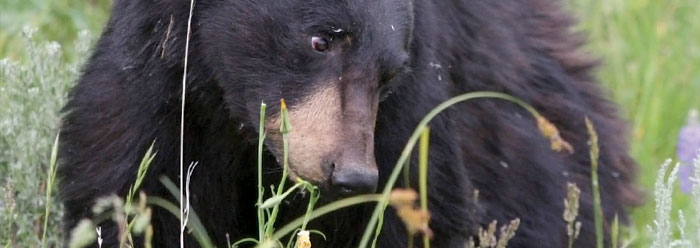Although the origin of predation is poorly understood, it is incorrect to attribute to young-earth creation the assertion that predatory animals quickly and recently evolved the physical features necessary for predation. It is a common fallacy that carnivores evolved from a change in form and function. No physical evolution was required to change herbivores to predators--it was merely a change in behavior.
The view that an alteration of genomes and phenotypes, such as sharp teeth and claws, would have been required to supply the physical features for predation from herbivorous features common in plant-eating animals is not correct. The shape of the teeth, the ability to run fast for short distances, and all the other physical attributes given to predators can be used for acquiring plant food sources as well. A few examples of mammal diets will verify this quite well.
Large, sharp teeth are not used solely for killing and ripping flesh from other animals. Fruit bats have sharp, pointed teeth, similar to those in cats, designed to quickly tear flesh from fruit. These teeth easily could remove flesh from an animal, but the fruit bat does not use them for this purpose. The same teeth in many kinds of predatory animals used to shred meat can also be used to shred plant material.
Large canine teeth are also used in communication. Many animals--including chimpanzees, dogs (wild and domestic), big cats, and other predators--expose their canines to communicate ownership of mates, animal groups, food resources, and territory. Teeth are vital to the success of animals, both for communication as well as for feeding.
Bears of the American northwest provide the best example in the wild of how behavior determines diet. Grizzly bears and black bears are well-equipped to destroy the life of other animals. But they also use their physical tools to eat fruits and vegetables. As a biologist, I have personally witnessed bears clean apples out of an apple tree, consume large quantities of clover, and strip all the berries from wild raspberry, huckleberry, and choke cherry plants. These activities are also well documented in the scientific literature. Although classified as carnivores, bears are actually opportunistic omnivores and are quite capable of living off a vegetarian diet if the food source is available. Many "meat-eating" animals fall into this category. This "predatory" animal, like others, will eat the most nutritious meals that are the most easily obtainable.
Domesticated animals also provide an excellent example of how the behavior of an animal can be altered to utilize a specific food source. Dogs and cats have the same tooth structure as wild wolves and lions, respectively, yet these animals are able to change their behavior and eat processed food (cereal) made mostly from corn meal, soybean meal, and rice.
The ability and desire to eat prepared cereal or "chow" emphasizes another misconception concerning social predators. Most people are under the impression that these animals are after the same meat that we would use for roasts and steaks. They aren't. The choice portions of a killed herbivore are the internal organs that are rich in vitamins and other nutrients acquired from a vegetarian diet. This is what social predators, like wolves and lions, are after. The lower ranking animals are left with the steaks, roasts, and bones, while the higher ranking animals enjoy the benefits of a more nutritious, "vegetarian" diet found in the gut. The need for predation by these animals clearly results from a change in behavior, not from a change in form and function. It is also interesting to note that, typically, predators have to learn to kill. Social predators are not born with the knowledge of how to hunt and kill. They must learn these skills from the other animals in their group.
A change in form and function implies evolution has occurred through new genetic information, while a change in behavior requires no new genetic information. The latter is what we clearly observe, and it is perfectly consistent with a literal rendering of Genesis 1:30: "And to every beast of the earth, and to every fowl of the air, and to every thing that creepeth upon the earth, wherein there is life, I have given every green herb for meat: and it was so."
* Dr. Daniel Criswell has a Ph.D. in Molecular Biology.
Cite this article: Criswell, D. 2009. Predation Did Not Come from Evolution. Acts & Facts. 38 (3): 9.














